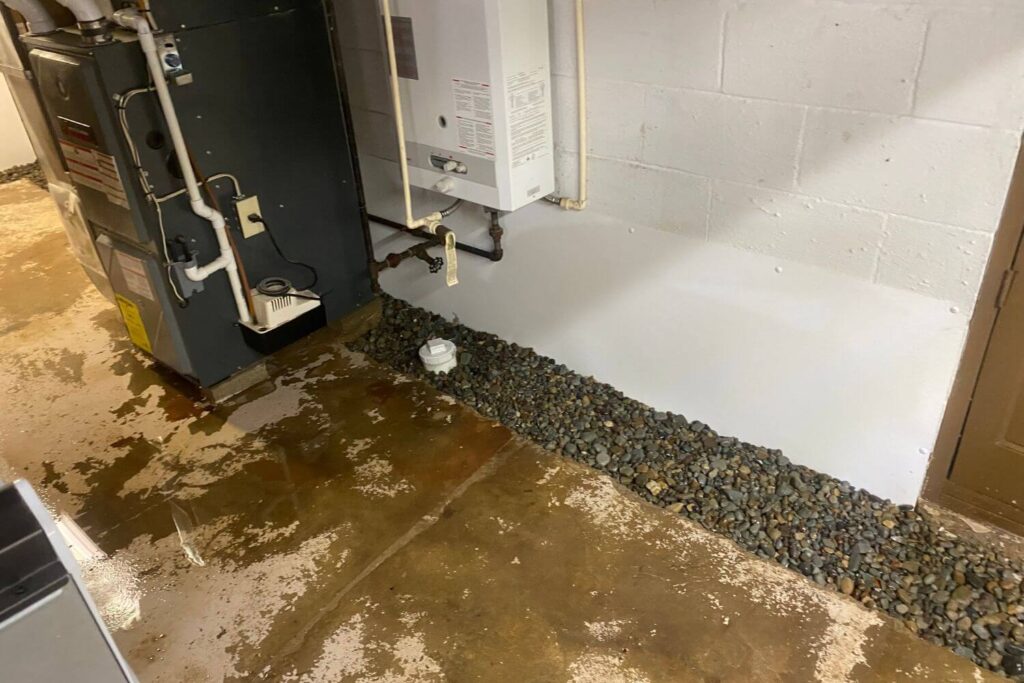If your home is tilting and it’s getting hard to open windows and doors, foundation piering can help restore your home’s integrity. Foundation settling can be a normal process as gravity and your home’s weight further compact the earth under your foundation, but when the process happens too rapidly or unevenly, it can put your home at risk. Foundation lifting from Western Pennsylvania’s foundation experts using quality American-made piers and guaranteed work can level out your foundation and give it the support it needs for your family’s safety and security.
Why Foundations Settle
Before the construction of your home began, the land it was built on was excavated, and the soil under and around your home’s foundation was compacted. Preparing the land minimizes voids in the soil that can collect moisture. Over time, wet and dry spells and temperature changes can cause the soil to swell, contract, and shift, leaving instabilities. As the weight of your home is pulled down by gravity, it further compacts that soil. If the settling progresses normally, the entire property settles at a slow, steady pace for several years. When the process is uneven or happens too rapidly, you may need foundation piering to correct the problem.
What is Foundation Piering
Foundation piering gives your home the solid footing it needs to support its weight. Small sections next to your home are excavated to give access directly to your foundation. A strong steel bracket is attached to a foundation, and steel pier lengths are hydraulically driven into the ground through the bracket. Once the piers reach harder, more stable bedrock, they’ll begin lifting the foundation. Once the foundation settling is leveled out and reversed to bring your home into plumb, the Piers are secured at that height, permanently stabilizing the foundation.
Signs You May Need Foundation Piering
While foundation piering may not be the right choice for every foundation issue, it can be the best choice to correct a falling foundation that needs lifting to prevent further damage and restore the home’s stability. Signs of foundation settling issues that can put your home at risk include:
- Doors and Windows that Won’t Open or Close – Often one of the first signs homeowners notice that point to foundation issues, this is a direct result of uneven settling. When your home is built, your window and door frames have sharp 90-degree corners that allow for free-swinging doors and straight-line movements of windows. As the home shifts under your feet, the walls follow. When the deviation from 90 degrees gets severe enough, windows and doors become jammed and immovable.
- Uneven Floors and Shifting Walls – If your floors develop peaks, valleys, or rolling slopes, it’s a strong indicator of uneven foundation settling. This can also be seen anywhere there is a concrete slab foundation on the property, including driveways, garages, sheds, barns, and cupolas. Walls attached to a shifting foundation can likewise be affected and start pulling away from each other, sloping, or bowing.

- Deep Cracks in the Walls of Slab – Cracks wider than ⅛” can point to major shifts in your home’s geometry. These can be especially telling if they run at a 45-degree angle or occur in a stair-step pattern. These kinds of cracks indicate the stresses on the wall are pulling both vertically and horizontally, which is often the result of improper foundation settling that should be corrected with foundation piering.
- Moisture or Flooding in the Basement, Crawlspace, or Rooms Directly Above a Slab – When a foundation’s stresses cause the foundation or its walls to crack, water has a direct path into the area. This can be due to ground seepage as the weight of the home forces water up through the floor, the weight of saturated soil forcing water through the walls, or above-ground cracks allowing warm, moist air to enter from outside the home.
How Foundation Piering Corrects Settling Issues
The foundation-lifting process physically corrects foundation-settling issues almost immediately. As the piers are extended to lift the brackets and then secured, larger cracks and gaps are often forced back together, where they can then be sealed to restore the wall or floor’s integrity. Windows and doors are brought back to square, allowing them to function freely. Walls that had begun pulling away can be anchored and re-secured, leaving your home once again stable and secure.

Once the foundation piering is in place, secondary damage to flooring, drywall, ceilings, and other structures can be repaired. Depending on how long the foundation issues have persisted and their extent, this could include anything from patching and repairing superficial damage to more extensive repair and replacement of damaged areas, plumbing work to correct leaks, and mold remediation. While fixing foundation issues can be a big job, it’s not one you have to tackle on your own.
Professional Foundation Piering, Lifting, and Repair Services
Getting a foundation expert involved as early as possible gives you the best chance of preventing further foundation damage and limiting the repair costs you face to restore and protect your property. When you request a free consultation, one of our experts will schedule an appointment to visit your home, assess the damage, and determine if foundation piering or lifting is right for you. They’ll give you a tailored estimate for professional repair services using USA steel piers and talk you through how the process will work for your property.
We always work to minimize the damage to your yard needed to place the piers and intrusion into your home life and busy schedule. Piering is often far faster and cheaper than foundation replacement and many other repair methods. There’s no cost to talk to an expert about your foundation issues. Request a foundation piering estimate from A.M. Wall Anchor & Waterproofing today.

